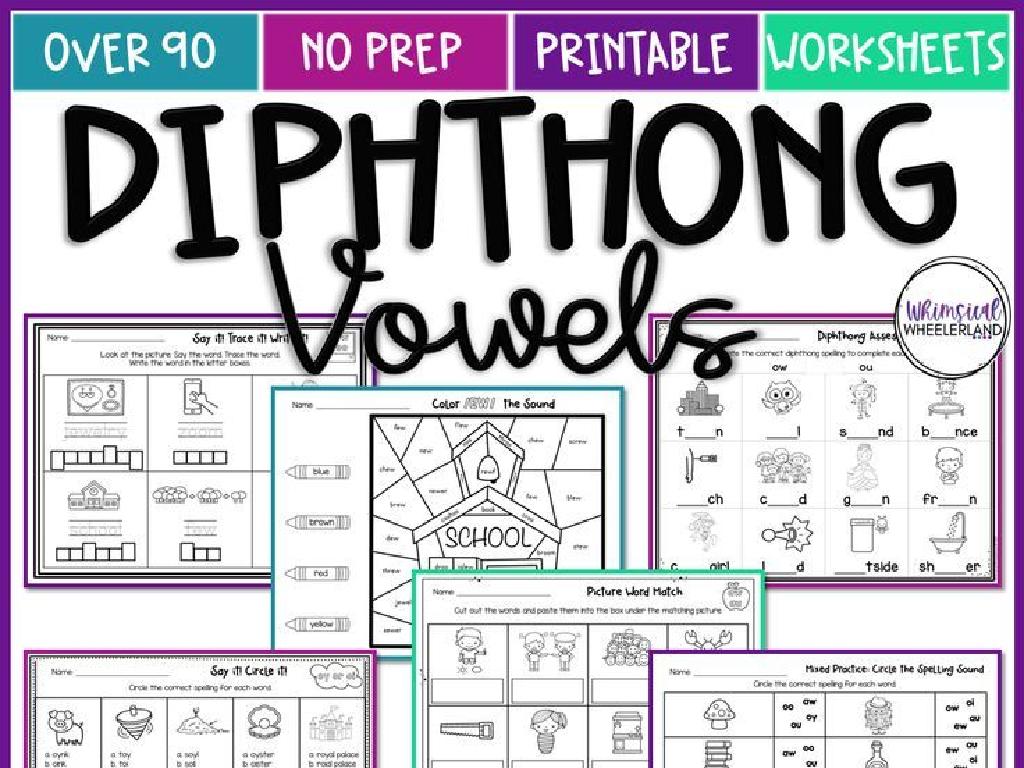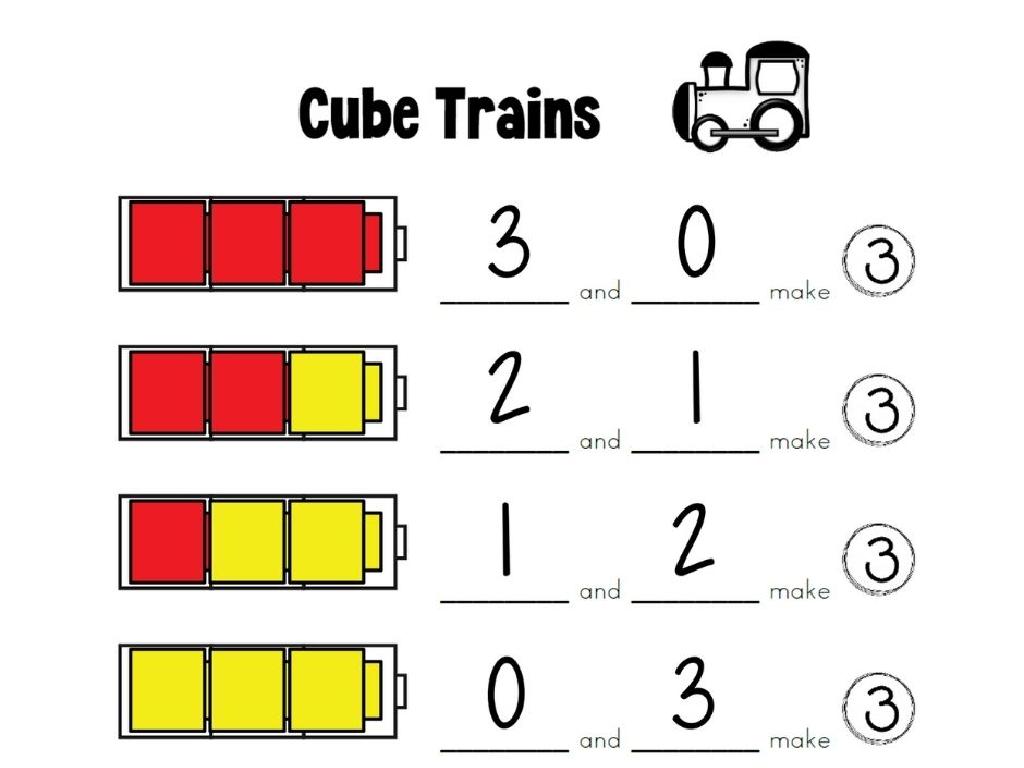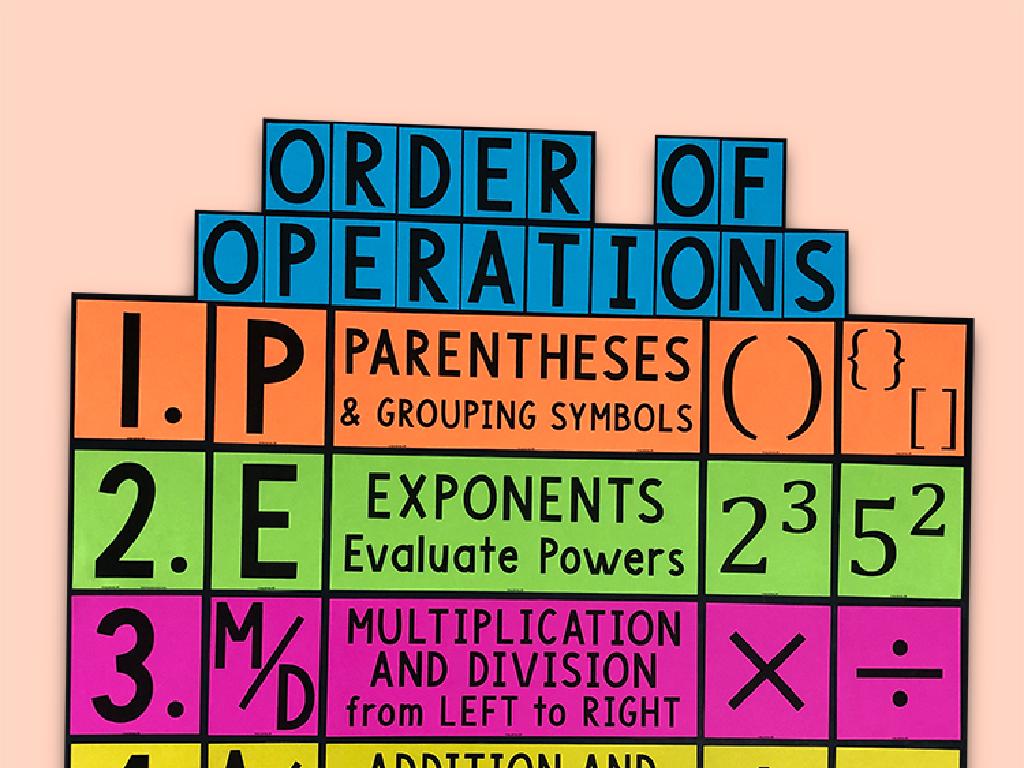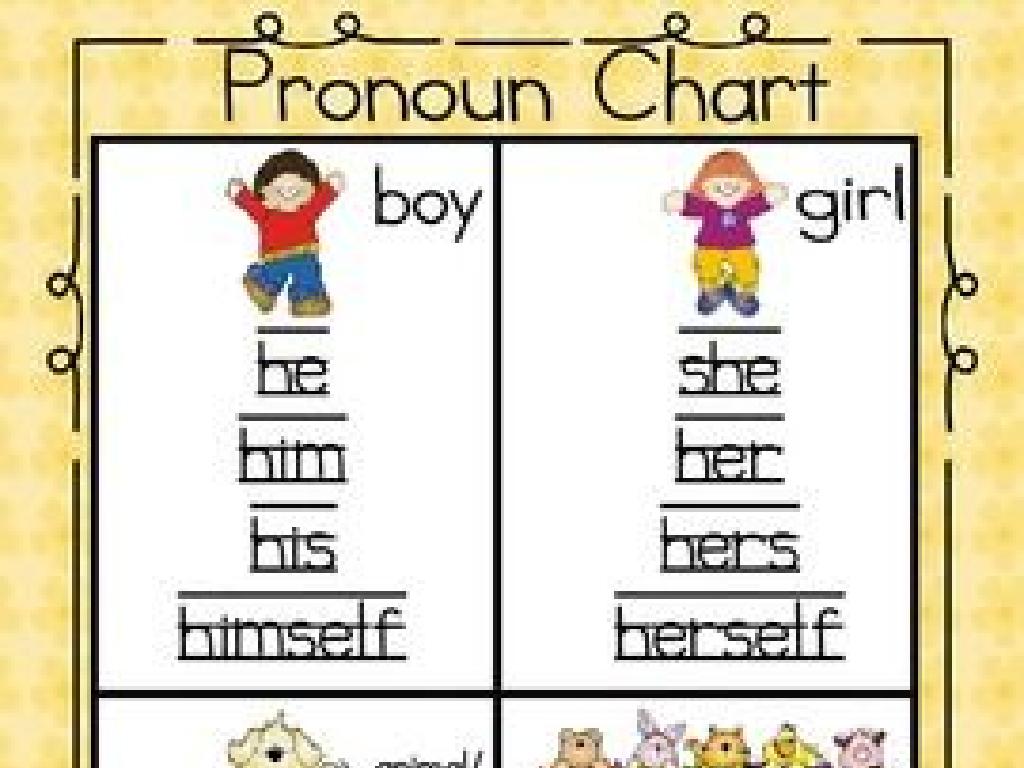Graph A Two-Variable Equation
Subject: Math
Grade: Sixth grade
Topic: Two-Variable Equations
Please LOG IN to download the presentation. Access is available to registered users only.
View More Content
Graphing Two-Variable Equations
– Understand two-variable equations
– An equation with two variables, like x and y
– Equations represent real-world scenarios
– Example: budgeting with income and expenses
– Today’s goal: graphing practice
– Visualize solutions on a graph
– Each point on the graph represents a solution
|
Begin by explaining that a two-variable equation includes two different variables, commonly x and y. These can represent numerous real-world situations, such as balancing a budget with income (x) and expenses (y). Today’s objective is to learn how to graph these equations, which will help students visualize the set of possible solutions. Show how each point on the graph corresponds to a pair of x and y values that satisfy the equation. Use simple and relatable examples to illustrate the concept, and ensure students understand that graphing is a powerful tool for visualizing mathematical relationships in practical scenarios.
Understanding Two-Variable Equations
– Define two-variable equation
– An equation with two different variables, e.g., y = 2x + 3
– Variables as unknowns
– Variables like x and y can take various values
– Equations show relationships
– They express how one variable depends on another
– Visualizing with graphs
– Graphs help us see solutions as points on a plane
|
Begin by explaining that a two-variable equation involves two different variables, typically x and y, which can take on various values. Emphasize that these variables represent unknowns in mathematical problems. Illustrate with simple examples like y = 2x + 3, where y changes with x. Clarify that the equation shows a relationship between x and y, where y depends on the value of x. Introduce the concept of graphing as a way to visualize these relationships, where each solution to the equation is a point on the coordinate plane. Encourage students to think of real-life situations that could be represented by two-variable equations, such as saving money over time or tracking distance traveled.
The Coordinate Plane
– Understanding the X and Y axes
– The X axis is horizontal, Y axis is vertical
– Points on the plane (x, y)
– Each point is defined by an (x, y) pair
– Quadrants and their roles
– Quadrants I, II, III, IV divide the plane
– Graphing equations on the plane
– Use points to plot and draw the equation line
|
This slide introduces students to the fundamental concept of the coordinate plane, which is essential for graphing two-variable equations. Start by explaining the perpendicular X and Y axes, which intersect at the origin (0,0). Emphasize that every point on the plane is represented by an (x, y) coordinate, where ‘x’ is the horizontal position, and ‘y’ is the vertical position. Discuss the significance of the four quadrants created by the axes and how they help in determining the sign of the coordinates. Finally, demonstrate how to plot points given by two-variable equations and how these points can be connected to form a line, representing the equation graphically. Encourage students to practice by plotting points and drawing lines for different equations.
Plotting Points on the Coordinate Plane
– Finding points on a grid
– Use the x-axis and y-axis to locate points
– Practice with given coordinates
– We’ll plot (2,3), (4,-1), (-5,0), and (0,4) together
– Class Activity: Plotting Challenge
– Each student will receive a set of coordinates to plot
– Understanding two-variable equations
– Learn how these points represent solutions to equations
|
This slide introduces students to the concept of plotting points on a coordinate plane, which is essential for graphing two-variable equations. Start by explaining the x-axis (horizontal) and y-axis (vertical) and how they intersect at the origin (0,0). Demonstrate plotting points with clear examples. For the class activity, provide each student with a coordinate plane and a unique set of coordinates to plot. This hands-on experience will help solidify their understanding. As an extension, discuss how each plotted point represents a possible solution to a two-variable equation. Possible activities: 1) Plot points to form a shape, 2) Find a mystery point with clues, 3) Plot points from a word problem, 4) Create a graph with a partner.
Graphing a Two-Variable Equation
– Choose values for one variable
– Select values for x to find corresponding y values
– Create a table of values
– Organize x and y pairs in a table format
– Plot points on the coordinate plane
– Mark each (x, y) pair on the grid as a point
– Connect points to reveal the graph
– Draw a line through the points to form the graph
|
This slide introduces students to the process of graphing a two-variable equation. Start by choosing values for one variable (typically x) and use the equation to solve for the other variable (y). Next, create a table to organize the x and y pairs. Then, guide students to plot these points on a coordinate plane. Finally, connect the points to visualize the equation as a graph. Emphasize the importance of plotting points accurately and the relationship between the algebraic equation and its graphical representation. Encourage students to try different x values to see how the graph changes and to understand the concept of the function’s domain and range.
Drawing the Line: Graphing Two-Variable Equations
– Plot points on the graph
– Connect points to form a line
– After plotting, draw a straight line through the points
– Line represents all solutions
– Any point on this line is a solution to the equation
– Understand linear relationships
– A linear relationship means one variable changes at a constant rate with respect to the other
|
This slide aims to teach students how to graph a two-variable equation by plotting points and connecting them to form a line. Emphasize that the line on the graph represents all possible solutions to the equation, illustrating the concept of a linear relationship between the two variables. Explain that in such a relationship, as one variable increases or decreases, the other does so at a consistent rate. Encourage students to practice by plotting points from different equations and drawing the corresponding lines. This will help them visualize and better understand the concept of linear relationships and how they apply to real-world situations.
Graphing Two-Variable Equations in Real Life
– Solve real-world problems by graphing
– Graph distances vs. time
– Example: Distance-time graph for a road trip
– Budget with income and expenses graph
– Example: Graph monthly income against expenses
– Interpret graphs for decision making
– Use graphs to choose the best financial or travel plans
|
This slide aims to show students how graphing two-variable equations is applicable in everyday situations. Start by explaining how graphing can solve problems by visualizing relationships between variables. Use a distance versus time graph to illustrate how speed and travel time relate, such as plotting the distance covered on a road trip over hours. For budgeting, show how to graph income against monthly expenses to understand spending habits. Emphasize the importance of interpreting these graphs to make informed decisions, like planning a trip within a budget or adjusting spending to save money. Encourage students to think of other areas where graphing could help in their daily lives.
Class Activity: Graphing Challenge
– Receive unique two-variable equations
– Pair up to graph your equations
– Use graph paper and plot points accurately
– Share your graphs with the class
– Explain your graph’s shape and intercepts
– Discuss the graphing experience
– Talk about any patterns or surprises found
|
This activity is designed to reinforce students’ understanding of graphing two-variable equations. Distribute different equations to each pair to ensure a variety of graphs are discussed. Provide guidance on plotting points and drawing the graph. Encourage students to discuss the linearity, slope, and y-intercept of their graphs. Possible activities: 1) Graphing a simple linear equation, 2) Graphing an equation with a positive slope, 3) Graphing an equation with a negative slope, 4) Graphing an equation that models a real-life situation. This will help students see the practical application of graphing equations and how different equations can produce different types of lines.
Graphing Two-Variable Equations: Summary & Homework
– Recap graphing steps
– Why graphing matters
– Graphs show how one thing affects another
– Homework: Graph 3 equations
– Choose equations and plot points
– Relate graphs to real life
– How might these equations apply to situations like budgeting or temperature changes?
|
As we conclude today’s lesson, remind students of the step-by-step process we’ve learned for graphing two-variable equations. Emphasize the importance of graphing as a tool for visualizing and understanding the relationship between variables in various contexts. For homework, students should graph three different two-variable equations, ensuring they plot the points accurately and draw the line that represents the equation. They should also think critically about how these equations can be applied to real-world scenarios, such as calculating expenses or analyzing temperature fluctuations over time. This exercise will reinforce their graphing skills and help them see the practical applications of math in everyday life.





